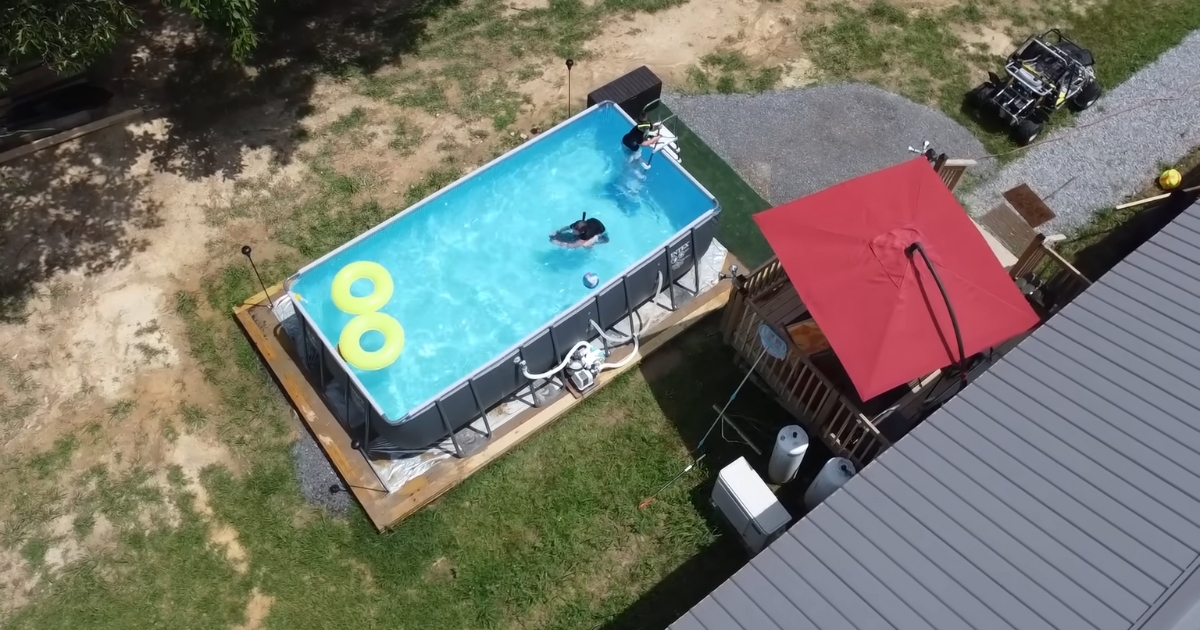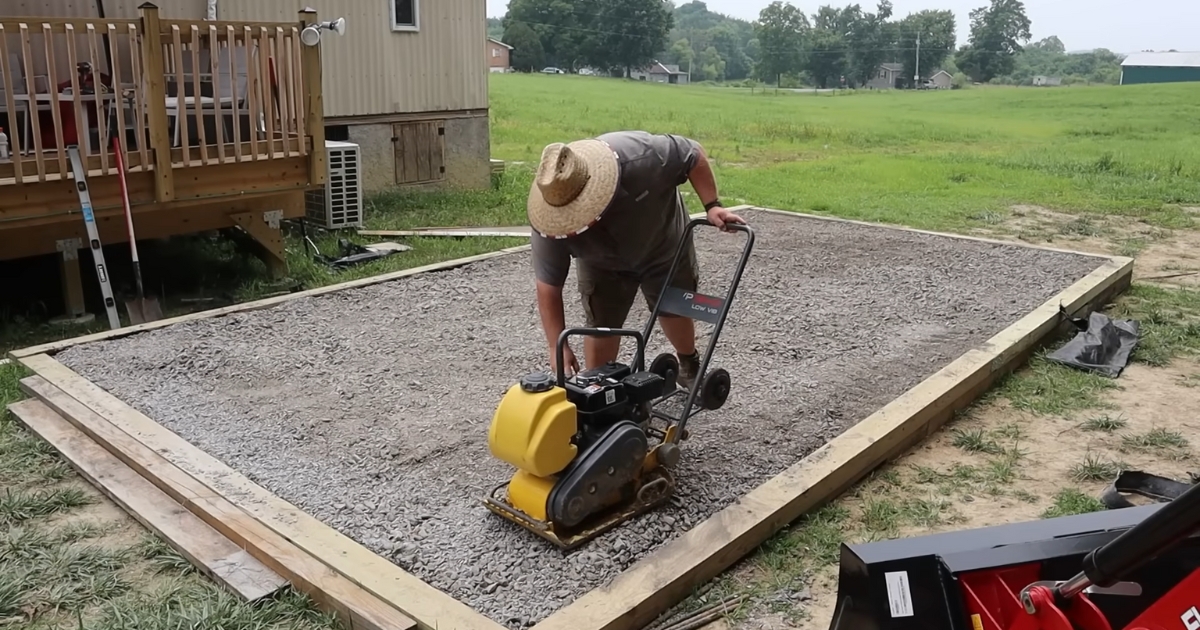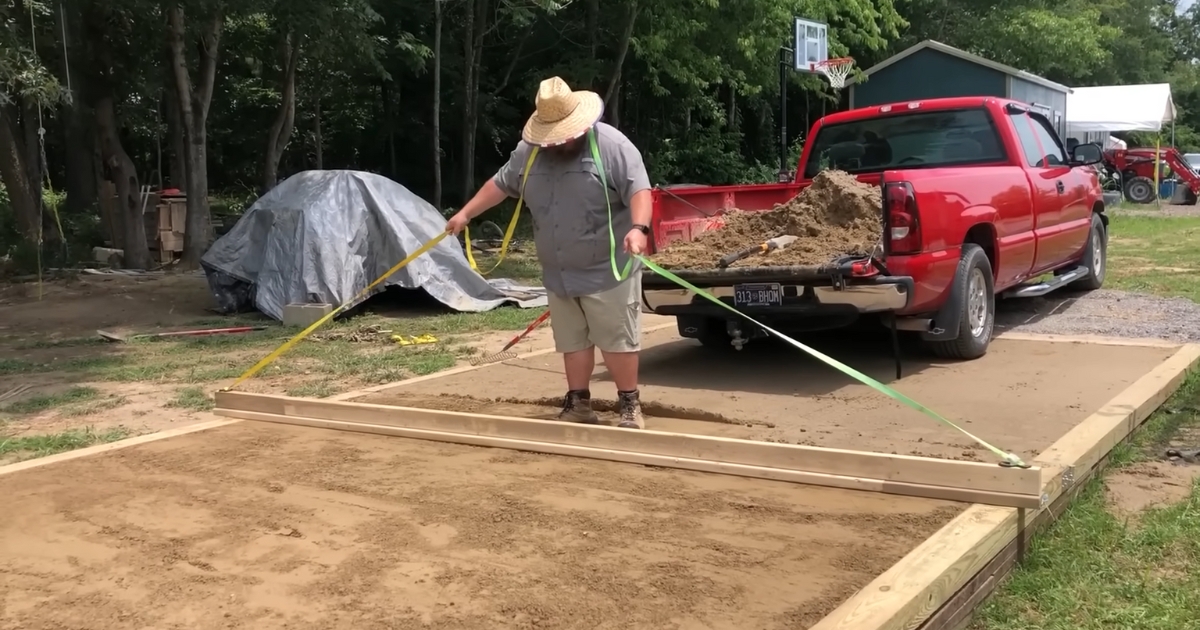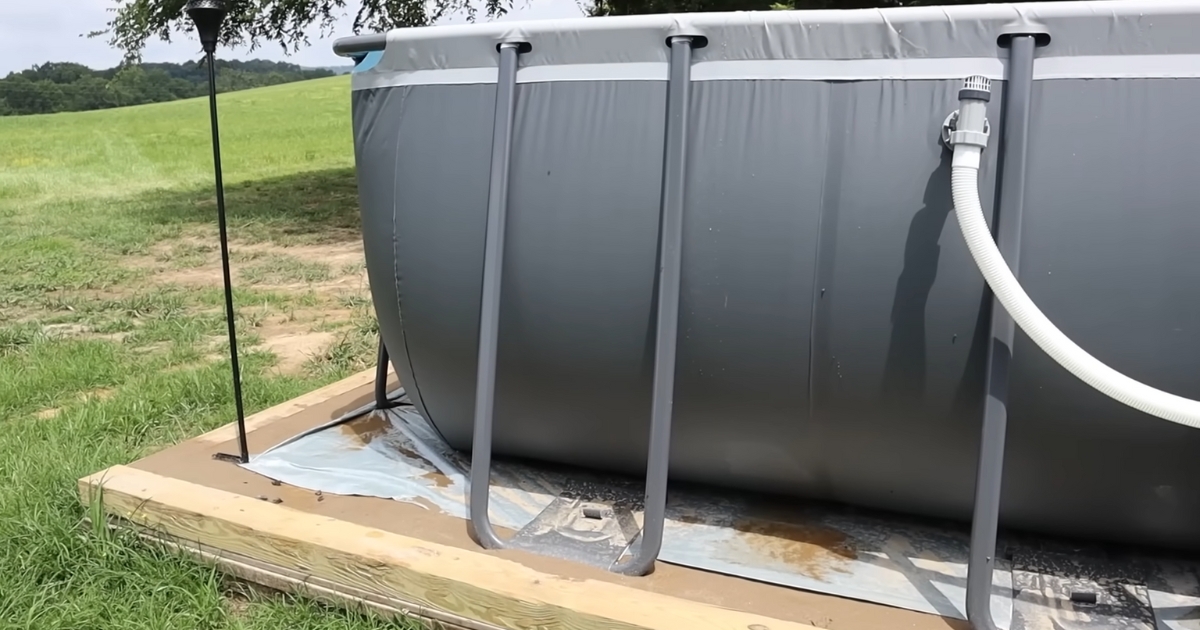Installing a pool in your backyard is an exciting adventure, but before you dive into the cool water, there’s an important task that needs attention: leveling the ground. Ensuring the surface is level is crucial for the stability and safety of your pool.
Whether you’re setting up an above-ground pool or preparing for an in-ground pool, a level base prevents problems like uneven water distribution and structural damage.
In this post, I will walk you through the steps to achieve a perfectly level ground for your pool, making sure the process is clear and manageable.
Why Is Level Ground Important?
A level surface provides a solid foundation for your pool, preventing many potential issues. It ensures that the water stays evenly distributed, which is essential not just for the enjoyment of swimmers but for the pool’s longevity.
Uneven ground can lead to uneven pressure on the pool walls, increasing the risk of damage or collapse. In simple terms, a level ground means a safer and more stable pool for everyone.
For those considering pool installation, exploring services from professionals like Achievable Pools and Spas can provide valuable insights and assistance in ensuring a smooth and successful project from start to finish.
Preparing the Site
Before anything else, choosing the right spot for your pool is critical. You want a location that’s not only flat but also away from trees and too much shade, which can complicate maintenance due to debris and algae growth.
Steps to Prepare the Ground
- Clear the Area: Remove any grass, stones, and debris. The goal is to start with a clean slate.
- Mark the Perimeter: Use stakes and string to outline the pool’s dimensions. This step helps ensure you’re working within the right space.
How to Level the Ground
Once the site is prepared, it’s time to focus on getting the ground level.
-
Measure the Slope
- Tools Needed: A long level or a laser level, stakes, string
- Process: Place the level on the ground and measure the highest and lowest points. This measurement will give you an idea of the work ahead.
-
Remove High Spots
- Tools: Shovel, rake
- Process: Use the shovel to dig down the high areas. The rake helps in smoothing out the dug-out soil.
-
Fill in Low Spots
- Materials: Sand or soil
- Process: Fill in the lower areas with sand or soil, then use the rake for smoothing.
-
Compact the Soil
- Tool: Lawn roller or tamper
- Process: Compacting the soil is key to preventing settling once the pool is filled. A lawn roller or tamper will do the job effectively.
Ensuring Stability and Safety
Water Testing
After leveling, it’s wise to perform a water test. Spread a thin layer of water over the area to see if it collects anywhere. This test can reveal spots that might need more attention.
Considering the substantial effort required to maintain a swimming facility, especially in Minnesota’s fluctuating weather, it’s crucial to weigh the investment against the benefits before deciding whether to incorporate one into your backyard oasis.
Adding a Base Material
For extra stability, consider adding a base layer of material over the leveled ground.
- Materials: Crushed stone, sand
- Benefits: Improves drainage, provides a smooth surface
What if You Hit a Snag?
Encountering Rocky Ground
If you encounter rocky ground:
- Solution: You might need to remove larger rocks manually or with machinery, depending on the size.
Dealing with Heavy Clay
Heavy clay soils can be problematic for drainage:
- Solution: Mixing in sand or gravel can improve the situation.
Final Steps Before Pool Installation
Installing a Ground Cloth or Foam Pad
- Purpose: Adds a protective layer between the pool and the ground.
- Benefits: Helps prevent punctures and provides a softer bottom.
Checking Level One Last Time
- How: Use the long level or laser level again to ensure the ground is perfectly flat.
- Why: It’s crucial to catch any minor discrepancies before setting up the pool.
Maintenance Tips for a Level Pool
After installing your pool on the newly leveled ground, ongoing maintenance is key to ensuring it stays level and safe over time.
Monitoring Water Levels
Regularly check that the water levels in your pool remain even. Significant differences could indicate a shift in the ground beneath or an issue with the pool structure.
Checking for Settling
Periodically inspect the area around your pool for signs of settling or erosion. These could compromise the pool’s stability if not addressed promptly.
- Preventive Measures: Planting grass or using landscaping fabric around the pool area can help reduce erosion.
Adjusting for Rainfall
Heavy rains can alter the ground around your pool. After significant rainfall, assess the ground for any changes and take corrective action if necessary.
- Solution: If rain causes the ground to settle unevenly, adding or removing soil to maintain level ground may be required.
FAQs
Can I Level Ground for a Pool Myself?
Absolutely, with patience and attention to detail, homeowners can level the ground for their pool. It’s a project that requires effort but is achievable with the right tools and guidance.
How Long Does It Take to Level Ground for a Pool?
The time required depends on the size of the area and the initial condition of the ground. It could take anywhere from a few hours to a couple of days.
Is Sand or Soil Better for Leveling?
Both have their advantages. Sand is easier to level and provides excellent drainage, but it can shift over time. Soil, especially when compacted, offers more stability but requires proper preparation to ensure it’s free of organic material that could decompose and cause settling.
What’s the best time of year to level ground for a pool?
Spring or early summer is ideal. These seasons offer dry weather that makes the soil easier to work with and allows enough time for the ground to settle before the installation.
Do I need to remove grass before leveling the ground for a pool?
Yes. Removing grass ensures a smoother leveling process and prevents organic material from decomposing under your pool, which could lead to uneven ground later.
Can I use a pool on slightly uneven ground?
Not recommended. Even a small incline can cause significant pressure on one side of the pool, leading to structural issues and potential safety hazards.
Final Words
Leveling the ground for a pool might seem like a daunting task, but with the right tools and a step-by-step approach, it’s entirely achievable.
Remember, the effort you put into this stage pays off in the form of a safe and stable pool.
Taking the time to level the ground properly means fewer headaches in the future and more time to enjoy your backyard oasis.
















